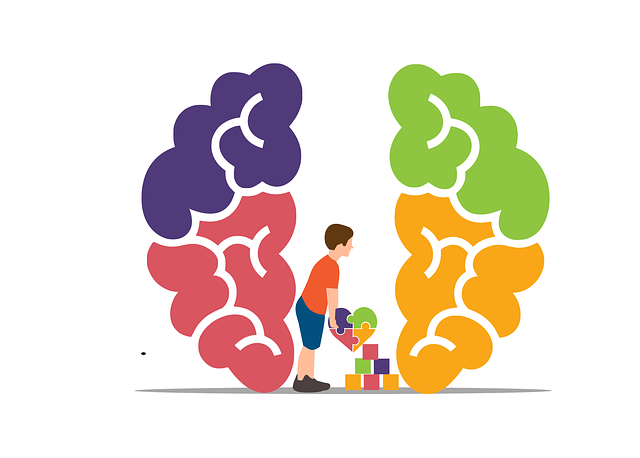Risk assessment in healthcare, guided by Golden Acceptance and Commitment Therapy (ACT) principles, identifies and mitigates potential hazards like medical errors, patient falls, and provider burnout. The process involves recognizing diverse risk sources and prioritizing severe, likely issues using historical data and stakeholder input. Evidence-based strategies, including ACT principles, mindfulness meditation, conflict resolution training, and self-care routines, enhance resilience among clients and practitioners. Continuous monitoring and adaptability are key to effective harm minimization in mental health support, ensuring proactive, tailored strategies for improved well-being.
Risk assessment and harm minimization are essential components of any comprehensive safety strategy. This article guides you through a structured approach to managing risks effectively, leveraging the powerful framework of Acceptance and Commitment Therapy (ACT). We’ll explore defining potential hazards, prioritizing risks, developing strategies for mitigation, and continuous monitoring. By embracing these tactics, organizations can foster a culture of resilience, ensuring both individual well-being and operational success in alignment with Golden Acceptance and Commitment Therapy principles.
- Understanding Risk Assessment: Defining Potential Hazards and Their Impact
- Acceptance and Commitment Therapy (ACT): A Framework for Harm Minimization
- Identifying and Prioritizing Risks: A Step-by-Step Approach
- Developing a Comprehensive Harm Minimization Plan: Strategies and Tactics
- Implementation, Monitoring, and Adaptability: Ensuring Continuous Risk Management
Understanding Risk Assessment: Defining Potential Hazards and Their Impact

Risk assessment forms the cornerstone of any comprehensive harm minimization strategy, especially within healthcare settings. It involves a meticulous process of identifying potential hazards and evaluating their likelihood and potential impact. This proactive approach is akin to Golden Acceptance and Commitment Therapy (ACT), where individuals are guided to accept what cannot be changed while committing to actions that align with personal values. In healthcare, this translates to recognizing various risks—from medical errors to patient falls or even burnout among healthcare providers—and implementing strategies to mitigate these risks.
The process begins by acknowledging that hazards can stem from diverse sources, including environmental factors, human error, or systemic issues. For instance, a busy clinic might face challenges related to staff workload and communication, leading to potential conflicts and errors. Here, Healthcare Provider Cultural Competency Training could play a pivotal role in fostering an understanding of diverse patient needs and backgrounds, thereby enhancing communication and reducing miscommunication-related risks. Similarly, Conflict Resolution Techniques and Burnout Prevention Strategies are essential tools for navigating these complex dynamics and ensuring patient safety remains the top priority.
Acceptance and Commitment Therapy (ACT): A Framework for Harm Minimization

Acceptance and Commitment Therapy (ACT) offers a powerful framework for harm minimization planning by focusing on fostering psychological flexibility. This therapy emphasizes the importance of accepting difficult thoughts and emotions rather than trying to suppress or avoid them, which can often lead to greater distress. Through ACT’s proven techniques, individuals develop coping skills that enhance emotional healing processes and improve overall well-being.
By cultivating emotional intelligence, ACT enables people to navigate challenging situations with more resilience. This involves learning to observe one’s thoughts and feelings without judgment, allowing for a more balanced and objective perspective. As a result, individuals become better equipped to take valued actions that align with their personal goals and values, ultimately leading to a more meaningful life and reduced risk of harm.
Identifying and Prioritizing Risks: A Step-by-Step Approach

Identifying and prioritizing risks is a crucial step in any comprehensive risk assessment and harm minimization plan. It’s akin to navigating a complex labyrinth, where each path presents unique challenges. The first step involves conducting a thorough environmental scan, considering all potential hazards and their likelihood of occurrence. This includes reviewing historical data, seeking expert insights, and engaging stakeholders for a holistic perspective.
Once identified, risks are prioritized based on severity and probability. Using the Golden Acceptance and Commitment Therapy (ACT) framework can guide this process effectively. Risks with higher impact and greater possibility should be addressed first, followed by those that, while less likely, could still cause significant harm. This strategic approach ensures that resources are allocated efficiently, focusing on the most pressing matters. Conflict resolution techniques and self-care routine development for better mental health can also play a pivotal role in managing these prioritized risks, ultimately enhancing overall well-being and resilience.
Developing a Comprehensive Harm Minimization Plan: Strategies and Tactics

Developing a comprehensive harm minimization plan is an essential component of responsible risk assessment for mental health professionals. It involves creating strategies and tactics to anticipate, mitigate, and respond to potential risks in various settings, including clinical practices, community outreach programs, or research environments. This proactive approach leverages evidence-based methods such as Acceptance and Commitment Therapy (ACT) principles to foster resilience and well-being. By integrating mindfulness meditation into daily routines, mental health professionals can enhance their ability to stay present, make clear judgments, and effectively manage challenging situations without causing further harm.
A robust harm minimization plan should consider diverse scenarios, from individual client risks to broader systemic issues. Key strategies include regular risk assessment training for staff, establishing clear communication protocols, and developing contingency plans for escalating risks. Incorporating community outreach programs can broaden the support network, promoting a collaborative approach that benefits both clients and practitioners. By combining these tactics with ongoing supervision and self-care practices, mental health professionals can ensure they are equipped to provide safe, effective, and compassionate care in even the most complex circumstances.
Implementation, Monitoring, and Adaptability: Ensuring Continuous Risk Management

Effective risk assessment and harm minimization planning are not one-time events but require continuous management and adaptability. Implementation involves a comprehensive evaluation of potential risks, guided by evidence-based practices such as Golden Acceptance and Commitment Therapy (ACT). This approach prioritizes psychological flexibility, acceptance, and values-driven actions to foster mental wellness. Once strategies are put in place, regular monitoring is essential to track their effectiveness and identify any emerging challenges or changes in the individual’s condition.
Adaptability is key in ensuring that risk management remains dynamic. As individuals progress through therapy or coaching programs, such as Mental Wellness Coaching Programs Development, their needs may evolve, requiring adjustments to prevention strategies. For mental health professionals, conducting periodic risk assessments (Risk Assessment for Mental Health Professionals) allows them to provide tailored support and interventions, thereby enhancing overall well-being. This cyclical process of assessment, implementation, monitoring, and adaptation ensures a proactive approach to depression prevention and continuous improvement in service delivery.
Risk assessment and harm minimization planning are essential components of any strategic decision-making process. By understanding potential hazards, employing evidence-based frameworks like Acceptance and Commitment Therapy (ACT), and adopting structured approaches to identify and prioritize risks, organizations can develop robust harm minimization plans. These plans, coupled with continuous monitoring and adaptability, ensure that risks are effectively managed, enabling businesses to navigate challenges with resilience and achieve their goals while upholding the golden principle of acceptance and commitment therapy—living a valued life by committing to actions that align with personal values.










